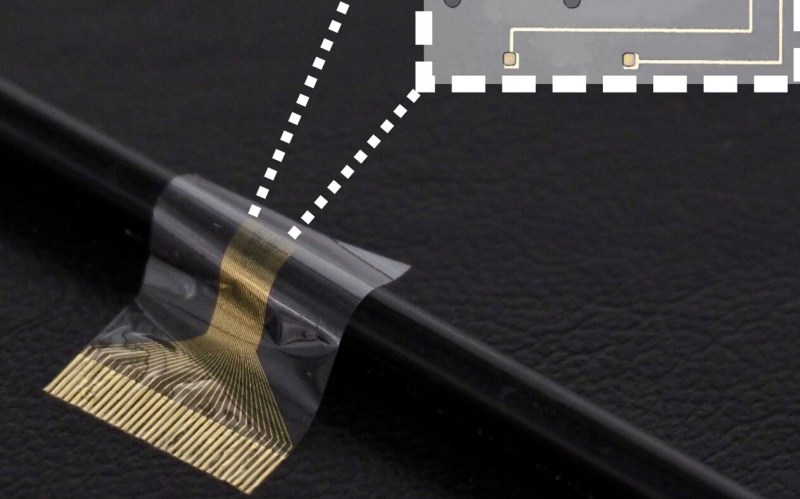Neural interfaces have made great strides in recent years, but still suffer from poor longevity and resolution. Researchers at the University of Cambridge have developed a biohybrid implant to improve the situation.
As we’ve seen before, interfacing electronics and biological systems is no simple feat. Bodies tend to reject foreign objects, and transplanted nerves can have difficulty assuming new roles. By combining flexible electronics and induced pluripotent stem cells into a single device, the researchers were able to develop a high resolution neural interface that can selectively bind to different neuron types which may allow for better separation of sensation and motor signals in future prostheses.
As is typically the case with new research, the only patients to benefit so far are rats and only on the timescale of the study (28 days). That said, this is a promising step forward for regenerative neurology.
We’re no strangers to bioengineering here. Checkout how you can heal faster with electronic bandages or build a DIY vibrotactile stimulator for Coordinated Reset Stimulation (CRS).
(via Interesting Engineering)
















When I 12 in the early 2000’s I thought, why don’t we just use a transmitter for nerves to send the signal past the broken spot, some day
I like more the idea of using “jumper wires” to skip the damaged part of a nerve. But the idea of using any kind of transmitter is quite scalable to “get out of your own body”… Something like the game cortex command.
Imagine “accidentally” leaving your prosthetic eye somewhere so you could watch the ladies change their clothes in locker room. Like what G’Kar did in Babylon 5 series in one episode when he watched Delenn and Sheridan in their bed.
Ah 12 years-olds frequent this comments section, I forgot.
‘G’Kar where is your eye….’
That show was magnificent.
But yea that essentially is what this is. A set of bodge wires to bridge the gap.
B5 references always catch me off guard outside of the reddit bubble. I remember seeing that episode and then about ten years later they were making prosthetic eyes that transmitted the data through the nerves in the tongue. Turns out the brain and nerves are pretty flexible processors once you get past the sensory organs.
With some of the advances they’re making with monofilament wire surgery to help people with palsy I don’t see why we couldn’t start using similar techniques along side protein scaffolds and nerve stem cell patches.
The neat trick will be tying those patches into hardware for direct human machine interface. Who knows how far down the road that one is.
The problem, as far as my limited knowledge of biology allows, is that feedback is needed. I mean: you don’t send a command like “flex the muscle 2cm”, but just a train of pulses, much like PWM. The point is that the train specifies how much force the muscle must do, so if, let’s say, your arm has to just be kept horizontal without any weight, the pulse train will be more spaced than if you have an apple in the hand. But that is done with pure feedback: if you feel that the arm is going down, instinctively you increase the pulse train to compensate, and vice-versa. So, in my opinion, without double way communication, it wouldn’t work.
I don’t think the OP intended “transmitter” to be the in the strict sense.
I know. I understand that they meant “a receiver in the brain and a transmitter in the muscle” to “reproduce” the original signals. And that’s the point: without another connection “in the other way”, it would be useless.
Not to mention that nerves are chemo-electric, they rely on both chemical and electrical signals.
We need to do this kind of work if Deus Ex is ever to come about.
I can’t help but feel that application will be extremely limited until we make cells that will bond with some form of wire or vice-versa. Things will get really interesting when start making circuits using synthesized neurons. I think it would be nice to have an internal RTC. :)
I don’t think an RTC would be the first thing I’d want to mess with, be able to directly (one way) operate a virtual keyboard and mouse would be kick ass, even if I had to plug a dongle into the computer to do it. No bluetooth or anything that could possibly open a two-way communication pathway back to my brain at this time though, as a developer I don’t trust developers to write code that’s bug/vulnerability free enough to have an implant provide input to my brain just yet, just output (and I include myself in the pool of people I wouldn’t trust, I’m careful, but I’m not “I’d like to tamper with wetware” careful).
“the only patients to benefit so far are rats”
I wonder where they find all these injured rats…
In the Corporate Rat Race :-D
Same place they found all the others that benefited modern living and allow you to get healed when you need medical help. Bug out into the desert and die of mild infections if you want to be that judgmental.
I was just continuing the author’s ironic discourse with a joke. I had no intention of opening a debate on the issue of lab rats, and I don’t intend to get dragged into it.